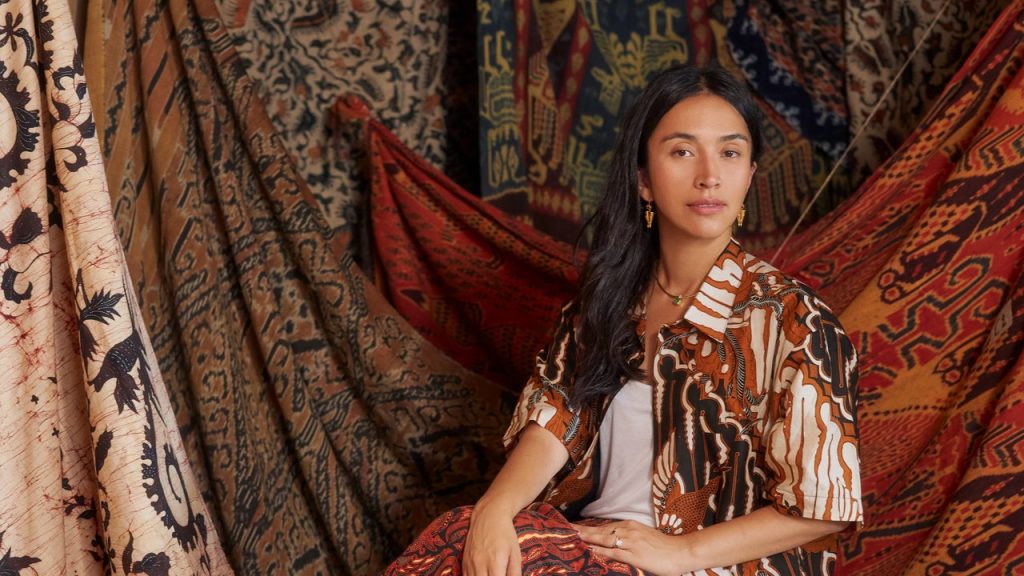Bangkok-born, London-based textile designer Lisa King recently found herself sorting through her late mother’s extensive collection of batik fabrics, which she discovered in 100 forgotten boxes in a warehouse last January. King had only just started incorporating batik, an Indonesian textile art form using wax to dye fabrics, into her own designs when she stumbled upon this treasure trove of over 500 pieces. The collection consisted of sarongs, kains, and selendangs that her mother had collected during her annual trips to Indonesia, showcasing a rich family history and tradition of appreciating and acquiring these textiles.
Initially overwhelmed with the sheer number of fabrics and unsure how to proceed, King sought advice from batik experts, including curators at the Metropolitan Museum of Art and the Indonesian Embassy. Together, they decided that while some pieces would be preserved for their historical and artistic value, the majority of the collection should be shared with a wider audience. Recognizing that these textiles had a story to tell and a heritage to preserve, King felt strongly that they should not be locked away in a warehouse or museum, but rather be used and appreciated by people who may not even frequent museums.
Through discussions with experts and her own reflections on her family’s connection to these fabrics, King decided to launch a collection using her mother’s batiks as inspiration and material. She carefully selected pieces that had unique patterns, colors, and cultural significance, and began transforming them into contemporary designs with a nod to their traditional roots. This process not only allowed her to pay homage to her mother’s legacy but also gave new life to the fabrics, ensuring that they remained relevant and accessible to a modern audience.
The decision to turn her mother’s collection into a wearable and contemporary collection was a way for King to honor her family’s history and showcase the intricate beauty of Indonesian batik to a wider audience. By infusing her designs with a mix of tradition and modernity, she was able to create pieces that bridged the gap between generations and cultures, making the textiles more accessible and relevant in today’s fashion landscape. King’s dedication to preserving and showcasing these fabrics in a new light highlights the importance of honoring and celebrating traditional art forms while also adapting them to fit into a modern context.
By sharing her mother’s batik collection through her own designs, King not only paid tribute to her family’s heritage but also brought attention to the rich cultural significance of Indonesian textiles. Through her collaboration with experts and her own creative process, she was able to breathe new life into these fabrics, ensuring they would not be forgotten or lost to time. King’s journey of discovery and transformation serves as a testament to the power of honoring and reviving traditional art forms, showing how they can be passed down through generations and continue to inspire and captivate audiences in new and innovative ways.
In conclusion, Lisa King’s exploration of her mother’s batik collection showcases the importance of preserving and sharing traditional art forms in a contemporary context. By repurposing these textiles into wearable designs, she was able to create a bridge between past and present, honoring her family’s history while introducing Indonesian batik to a wider audience. Through her dedication to preserving and revitalizing these fabrics, King highlights the enduring beauty and cultural significance of these textiles, ensuring that they continue to inspire and captivate for generations to come.


